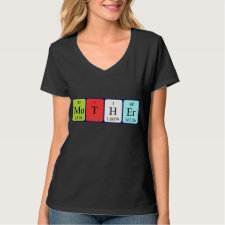
Authors: Shi T, Cheng ZY, Liu T, Zhang YL
Article Title: Application of up-conversion molecularly imprinted nanoprobe for selective recognition and straightforward detection of 4-aminobiphenyl.
Publication date: 2022
Journal: Spectrochimica Acta Part A-Molecular and Biomolecular Spctroscopy
Volume: 265
Article Number: 120405.
DOI: 10.1016/j.saa.2021.120405
Alternative URL: https://www.sciencedirect.com/science/article/pii/S1386142521009823
Abstract: A new method was developed for selectively and rapidly detecting carcinogen 4-aminobiphenyl, with lower limit of detection and wider linear range. Up-conversion nanoparticles β-NaGdF4:Yb3+, Er3+ was the first time to choose as light-emitting signal component. Molecularly imprinted polymers (MIPs) with specific recognition ability were successfully coated on the surface of β-NaGdF4:Yb3+, Er3+ to obtain a nano fluorescent probe for detecting 4-aminobiphenyl. The effect of addition amount of β-NaGdF4:Yb3+, Er3+ on the detection ability of β-NaGdF4:Yb3+, Er3+@MIPs was studied, and composite fluorescence nanoprobe with the best performance was obtained. β-NaGdF4:Yb3+, Er3+@MIPs were characterized by transmission electron microscopy, X-ray powder diffractometer, Fourier transform infrared spectroscopy and thermogravimetric analysis. The fluorescence intensity of β-NaGdF4:Yb3+, Er3+@MIPs decreased significantly compared with molecularly non-imprinted polymers β-NaGdF4:Yb3+, Er3+@NIPs (the maximum emission peak is at 541 nm) in the presence of 4-aminobiphenyl. Adsorption isotherm and adsorption kinetics between UCNP@MIPs and 4-ABP have been investigated and a satisfactory imprinting factor is 2.5. The detection mechanism is proved to be based on Langmuir adsorption and internal filtration effect. Under optimal experimental conditions, the limit of detection and quantification are 0.16 μM and 0.53 μM, respectively. The linear range of response is 1-50 μM, and RSD is less than 6.7%. This method was applied to determining river water samples in order to evaluate the practicability, and the good recovery rate is between 98.89% and 109.7%. These evidences demonstrate that β-NaGdF4:Yb3+, Er3+@MIPs is successfully used for the detection of 4-aminobiphenyl
Template and target information: 4-aminobiphenyl
Author keywords: Up-conversion nanoparticles, Molecularly imprinted polymers, 4-aminobiphenyl, monitoring, Nanoprobe



Join the Society for Molecular Imprinting

New items RSS feed
Sign-up for e-mail updates:
Choose between receiving an occasional newsletter or more frequent e-mail alerts.
Click here to go to the sign-up page.
Is your name elemental or peptidic? Enter your name and find out by clicking either of the buttons below!
Other products you may like:
 MIPdatabase
MIPdatabase









